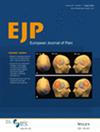Varying Analgesic Effectiveness of Systemic and Central Intrathecal Administration of Cyclooxygenase-2 Inhibitors in Different Phases of Osteoarthritic Pain in Rats
Abstract
Background
Osteoarthritis (OA) contributes to heightened pain perception by disrupting the normal function of peripheral nerves and spinal nociceptive circuits. Although selective cyclooxygenase-2 (COX-2) inhibitors reduce OA-associated pain, the distinct roles of spinal COX-2 and glial cell activity in this context remain poorly defined.
Methods
The effects of two COX-2 inhibitors, etoricoxib and celecoxib, were examined using an anterior cruciate ligament transection (ACLT) rat model of OA. Mechanical allodynia was assessed behaviorally using the von Frey filament test. COX-2 protein expression and glial cell (astrocyte and microglia) activation in the lumbar spinal cord were analysed via immunohistochemistry.
Results
Spinal COX-2 expression was significantly increased, mainly in neurons and astrocytes, at the 16th week after ACLT (p = 0.026). Microglia and astrocytes were activated from the 2nd to 16th week and from the 6th to 16th week after ACLT, respectively. The intrathecal median effective dose (ED50) of COX-2 inhibitors, etoricoxib and celecoxib, required for reducing mechanical allodynia was lower at the 16th week than at the 2nd week after ACLT surgery (p = 0.0448 and 0.046, respectively). In contrast, the oral ED50 values of etoricoxib and celecoxib for relieving mechanical allodynia were slightly higher at the 16th week than at the 2nd week after ACLT surgery (p = 0.097 and 0.227, respectively).
Conclusions
Our study shows that the efficacy of COX-2 inhibitors in ALCT-induced OA rats depends on the timing and route of administration. In the later phase, spinal glia cells exhibited increased activity and elevated COX-2 expression.
Significance
This study characterises the complex mechanisms underlying OA pain, involving both peripheral and central components, and highlights the stage-specific involvement of COX-2, particularly in the spinal cord. It provides experimental evidence linking central COX-2 activity and glial cell responses to OA pain, offering insights into the temporal dynamics of pain processing and guiding the development of therapeutic strategies.


 求助内容:
求助内容: 应助结果提醒方式:
应助结果提醒方式:


